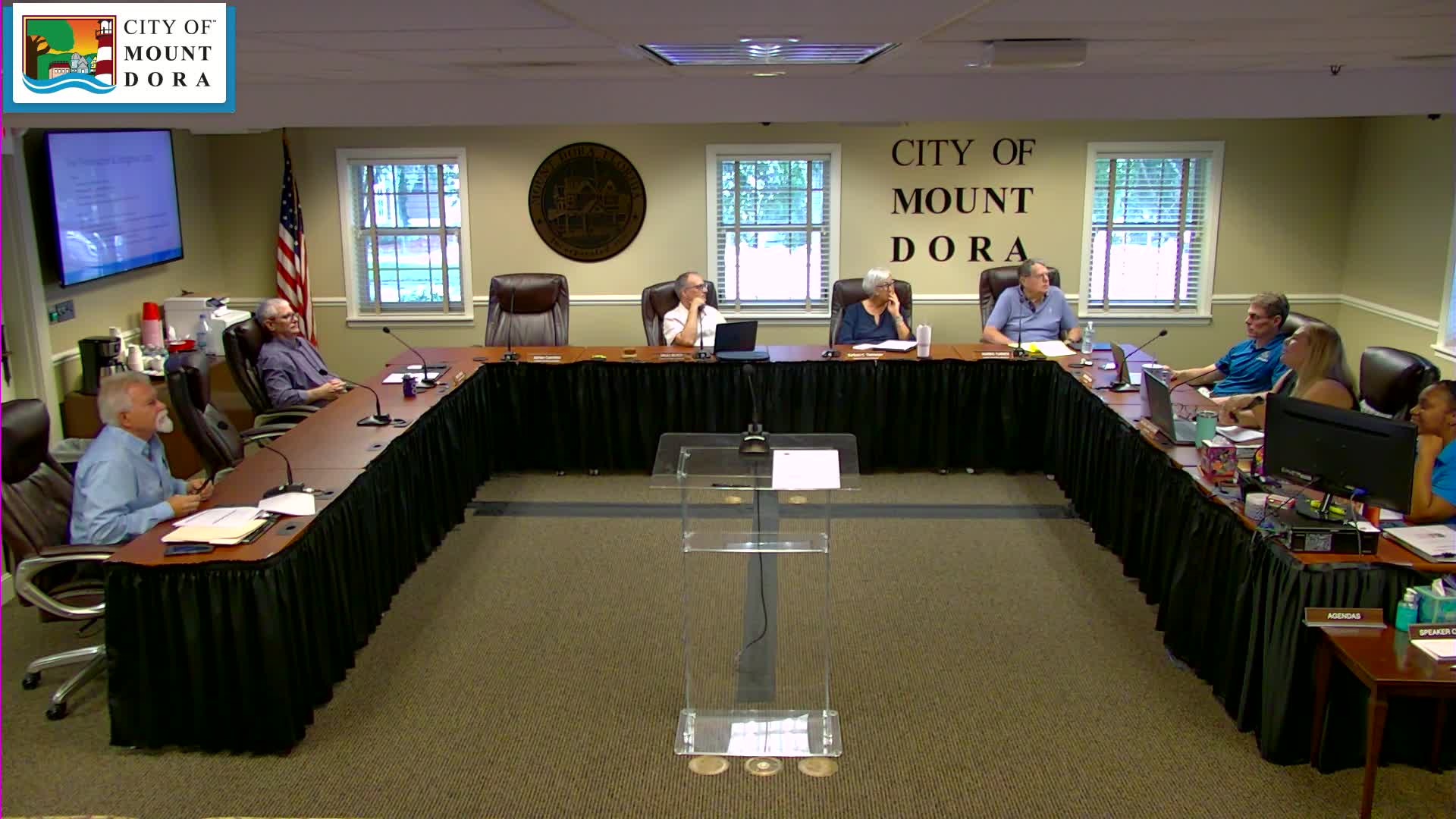Tree preservation plan sparks debate over developer costs
July 17, 2024 | City of Mount Dora, Lake County, Florida

This article was created by AI summarizing key points discussed. AI makes mistakes, so for full details and context, please refer to the video of the full meeting. Please report any errors so we can fix them. Report an error »

In a recent government meeting, officials discussed significant changes to tree preservation and mitigation policies aimed at enhancing local environmental sustainability. Key proposals included a shift towards promoting the preservation of existing trees on development sites, rather than relying on a tree bank for replacements.
One of the primary suggestions was to revise the current tree survey requirements to include the condition of trees, allowing for the exclusion of dead, diseased, or dying trees from calculations. This change is intended to encourage developers to retain larger, healthy trees, which could be credited as multiple canopy trees based on their caliper size. For instance, trees measuring between six and twelve caliper inches could count as two new canopy trees, thereby incentivizing the preservation of existing landscaping.
The meeting also addressed the existing mitigation requirements, which currently mandate a one-to-one replacement ratio for trees between six inches and 23.99 inches in diameter, and a more stringent one-to-six ratio for trees 24 inches or larger. Officials discussed the potential for a new system that would require developers to replace trees based on total caliper inches removed, rather than a simple tree count. This would mean that if a developer removed a larger tree, they would need to replace it with multiple smaller trees or larger specimens.
Concerns were raised regarding the fairness of the current tree bank contribution system, which only requires developers to pay for the cost of a replacement tree. Some officials argued that this approach allows developers to avoid the responsibilities of planting and maintaining trees, which could undermine the effectiveness of the tree bank. Suggestions were made to include additional costs in the contribution formula, such as planting and maintenance expenses, to ensure developers bear the full financial responsibility of tree replacement.
The meeting concluded with a consensus on the need for further exploration of these proposals, with plans to present a detailed ordinance in future sessions. The discussions reflect a growing commitment to enhancing tree preservation efforts and ensuring that development practices align with environmental sustainability goals.
One of the primary suggestions was to revise the current tree survey requirements to include the condition of trees, allowing for the exclusion of dead, diseased, or dying trees from calculations. This change is intended to encourage developers to retain larger, healthy trees, which could be credited as multiple canopy trees based on their caliper size. For instance, trees measuring between six and twelve caliper inches could count as two new canopy trees, thereby incentivizing the preservation of existing landscaping.
The meeting also addressed the existing mitigation requirements, which currently mandate a one-to-one replacement ratio for trees between six inches and 23.99 inches in diameter, and a more stringent one-to-six ratio for trees 24 inches or larger. Officials discussed the potential for a new system that would require developers to replace trees based on total caliper inches removed, rather than a simple tree count. This would mean that if a developer removed a larger tree, they would need to replace it with multiple smaller trees or larger specimens.
Concerns were raised regarding the fairness of the current tree bank contribution system, which only requires developers to pay for the cost of a replacement tree. Some officials argued that this approach allows developers to avoid the responsibilities of planting and maintaining trees, which could undermine the effectiveness of the tree bank. Suggestions were made to include additional costs in the contribution formula, such as planting and maintenance expenses, to ensure developers bear the full financial responsibility of tree replacement.
The meeting concluded with a consensus on the need for further exploration of these proposals, with plans to present a detailed ordinance in future sessions. The discussions reflect a growing commitment to enhancing tree preservation efforts and ensuring that development practices align with environmental sustainability goals.
View full meeting
This article is based on a recent meeting—watch the full video and explore the complete transcript for deeper insights into the discussion.
View full meeting